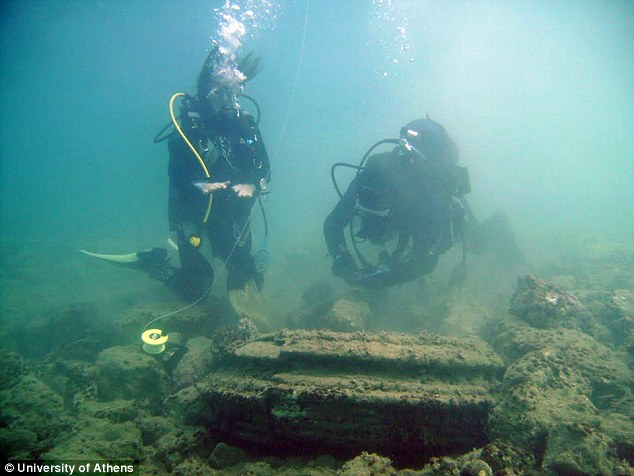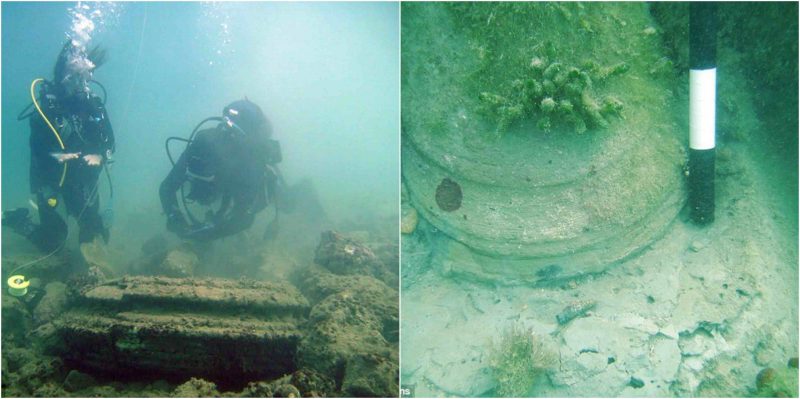A few years ago, divers believed they found an ancient Greek city that was swept up into the ocean’s waves and sunk forever. Now, new divers have come across something completely different and may even prove that this isn’t a sunken city after all.
In the murky ocean, bits and pieces of stone blocks and pavement are filled with algae and broken apart. While these pieces actually appear to be parts of a city that once stood on land, experts have discovered something completely out of the ordinary.

The remains of the Hellenic port in Zakynthos Greece have some hidden clues. The archaeologists working on the site have revealed that the pieces which look like colonnades are part of a natural geological feature that formed nearly five million years ago. The experts said that the interesting structures were made by the methane gas that leaked out from under the sea bed.
Although this is a fascinating discovery, it is not quite as neat as hoping that it was a long lost Greek city. However, there was a long lost city named Heracleion which submerged over 1,000 years ago that still needs to be found. The site in Zakynthos’s Alikanas Bay was found in 2013. There were large circular columns that were located, sitting on the sea bed with rectangular pavement pieces around them. Nearby there were large circular pieces found.
So what gave the indication that these pieces weren’t part of a lost city? There were no shards of pottery or any other evidence suggesting humans had lived in the area on land.
A geochemist on the site, Julian Andrews, said that the pieces discovered could easily be mistaken as lost city parts. He and his team had done a detailed analysis from the structures in order to solve the interesting mystery.
He added that he and his team had investigated the site, which is about two to five meters underwater, and what they found suggests that the pieces of wreckage are actually the result of natural geological sources.
He went into detail about how the circular bases are made by the mineralization of the hydrocarbon seeps. They are actually found in both the modern seafloor areas and paleo settings. The team had used mineralogical and chemical testing to look into the underwater structures. They then did a microscopy and X-ray analysis of the pieces. The stones were made by an underwater gas leak that was just below the sea bed.
The escaped methane had given energy to the microbes living on the sediment and on the sea floor. It then turned the sediment into natural cement called dolomite. The process is more commonly known as concretion and is actually quite common in microbe-rich sediments. However, they did not fully rupture and formed the tubes and columns in the sediment.
Andrews said that the round shaped structures had a straight line across them. This made them look like columns, making them form a line along the edge. In other areas, the gas actually bubbled along the sea bed, making the slab structures.
Andrews explained that the gas leak is rather interesting since it doesn’t occur as much in shallow waters. It usually happens hundreds and thousands of meters deep. He added that these particular features are proof that methane gas had seeped out of the rock and into the hydrocarbon reservoirs. The same thing happens in the North Sea as well due to fracking.
The microbes in the sediment use that carbon in the methane as fuel. From there, the microbe-driven oxidation from the methane changes the chemistry of the sediment. It forms a natural cement and, as stated above, results in concretion.
In this case, the cement was actually made into an odd mineral called dolomite. Dolomite rarely occurs in seawater, but is found in microbe-rich sediments. The concretions were then exhumed by the erosion into what can now be seen on the sea bed today.
